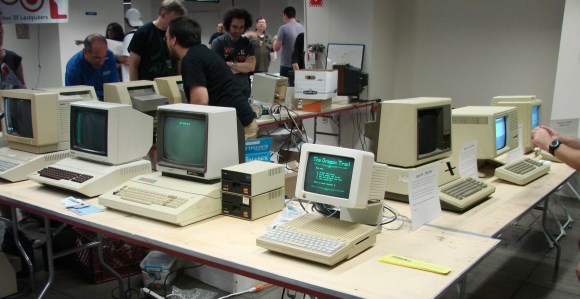
The Mid-Atlantic Retro Computing Hobbyist (MARCH) group is at HOPE X displaying a chronology of Apple computers, everything from an accurate Apple 1 reproduction all the way way up to an Apple Macintosh, and of course including all the II’s in between. Although they are only displaying Apples at this event, don’t confuse them for an Apple group. They love all types of vintage computers from the 1940’s to the 80’s.
[Evan], president of the group, elegantly explained why they are here; “to let people know that vintage computing is a thing and there are people in the area that do that thing”. He would like to encourage everyone who is mildly interested in retro computing to contact their local retro computer group and get involved in the community.
The group also puts on a yearly Vintage Computer Festival in New Jersey. This year’s event has already passed but you can still see what happened as Hackaday was there documenting all the cool stuff.












